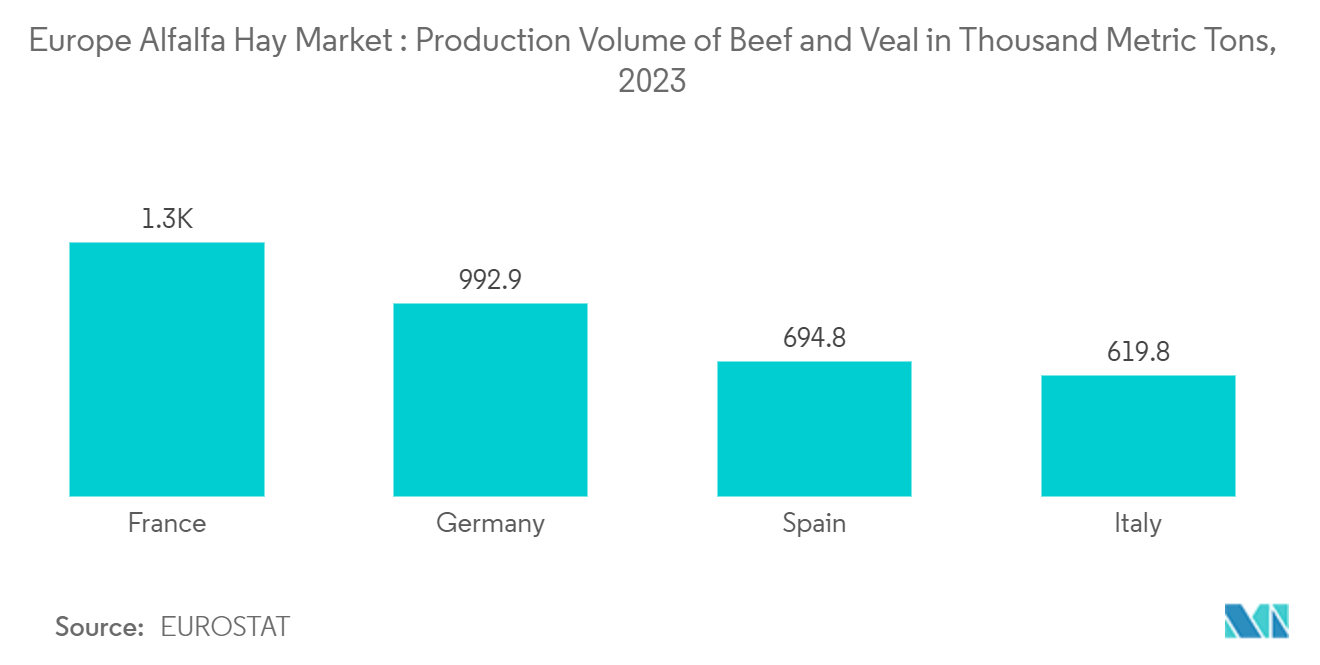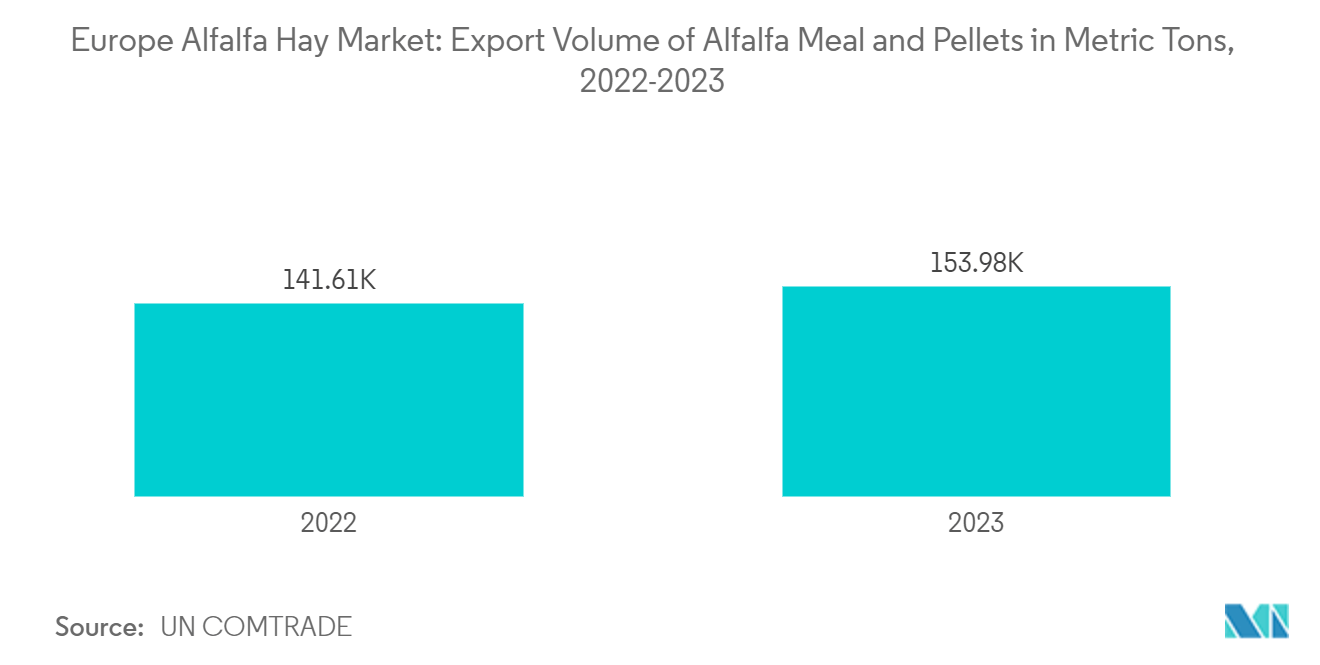Market Trends of Europe Alfalfa Hay Industry
Dairy and Meat Animal Feed is the Largest Consumer of Alfalfa Hay
Alfalfa hay is a primary feed source for various farm animals, including dairy cows, horses, beef cattle, sheep, chickens, and turkeys. It is harvested, stored, and made available in diverse forms: small, medium, and large rectangular bales, round bales, stacks, pellets, cubes, and loose hay. The European alfalfa hay market is experiencing significant growth, primarily driven by livestock demands. The European Union (EU) is a major producer of beef and veal, with a cattle herd of 78 million and over 70 million sheep and goats (85% sheep and 15% goats). According to Eurostat, in 2023, France led the EU in bovine meat production, producing 1,301.4 thousand metric tons of beef and veal, followed by Germany at 992.9 thousand metric tons.
In Europe, livestock products are in high demand due to their nutritional value and taste. Additionally, dairy product manufacturers are increasingly using alfalfa hay, driven by changing consumer preferences associated with rising income levels. According to Eurostat, the apparent annual milk yield in Europe continued to increase, reaching 7,653 kg per dairy cow in 2022. At the national level, Denmark (10,187 kg per cow) and Estonia (10,128 kg per cow) recorded the highest apparent annual yields, while Bulgaria (3,621 kg per cow) and Romania (3,367 kg per cow) had the lowest.
The dairy industry is driving the demand for alfalfa hay in Europe. European countries have increased agricultural productivity and production, leading to growing trade surpluses. According to FAOSTAT, in 2022, the production of beef and buffalo meat reached 6,903.5 thousand metric tons, while sheep and goat meat production was 577,490 thousand metric tons. The livestock sector faces significant pressure to meet the rising demand for high-value animal protein. Alfalfa hay demand is increasing substantially, primarily due to evolving production practices in the dairy industry. Modern dairy farmers, managing larger herds, prefer high-quality feeds. This reliance on alfalfa hay for dairy and animal feed is projected to continue driving the alfalfa hay market throughout the forecast period.

France Leads Significant Position in Alfalfa Hay Market
France is a major producer and exporter of dried alfalfa. The United States Department of Agriculture reported that France produced 1.4 million metric tons of alfalfa hay in 2022. The primary alfalfa farming region, located east of Paris, accounts for 80% of the country's production. Approximately 10,000 farmers across France cultivate alfalfa for personal use or supply it to cooperative-run drying plants. Alfalfa holds the position of the primary forage crop in France, providing essential proteins to various livestock, including dairy and beef cattle, sheep, horses, and poultry. Its widespread availability makes it an ideal hay choice, as it is produced and sold throughout the country. Alfalfa contains 15%-22% crude protein and is rich in various vitamins and minerals.
France has established itself as a prominent exporter of alfalfa hay, renowned for its high protein content and efficacy as feed for cattle and horses. French alfalfa is distributed across European markets and beyond, primarily addressing the nutritional needs of these livestock. Key importers of French alfalfa include Belgium, Germany, Switzerland, the Netherlands, and Norway. According to UN Comtrade data, France's exports of lucerne (alfalfa) meal increased from 141,612 metric tons in 2022 to 153,977 metric tons in 2023. This positive export trend is bolstering domestic production, which is anticipated to drive market growth throughout the forecast period.


